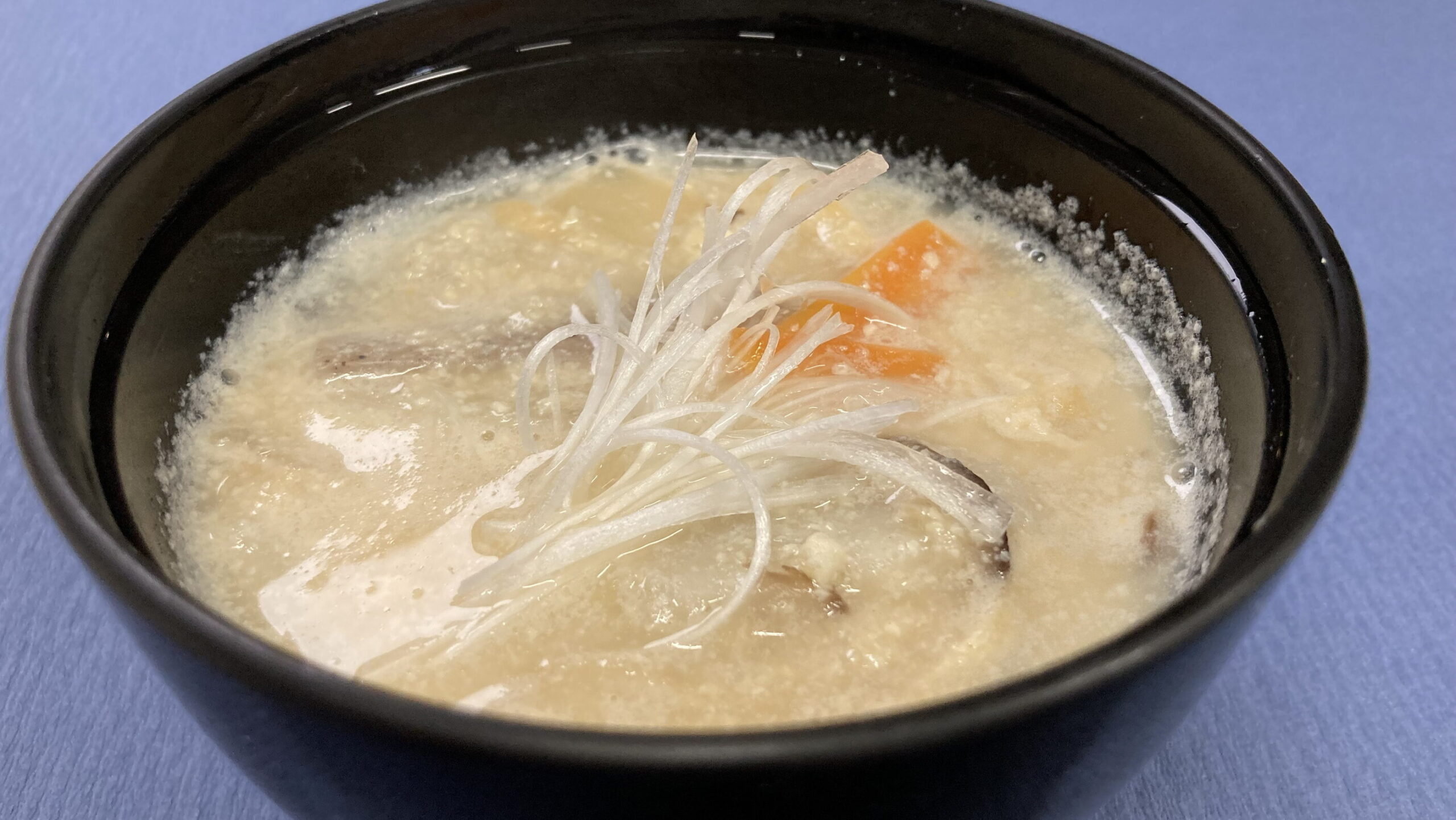
Listen up, everyone! When you talk about the real taste of Saitama, you absolutely have to mention “Gojiru”! This isn’t some fancy, highfalutin dish; it’s a hearty, down-to-earth soup that’s been warming bellies all across the prefecture for generations. It’s a testament to making the most of simple ingredients, especially the mighty soybean! Let’s get into it!
Dish Name: Gojiru / 呉汁
- Region / Location: Saitama Prefecture (throughout the prefecture).
- Primary Area of Tradition: Throughout Saitama Prefecture.
- Main Ingredients: Soybeans, various vegetables.
How It’s Eaten / Served
The heart of Gojiru lies in the humble soybean, soaked until plump and then ground into a velvety smooth paste using a traditional mortar. This creamy soybean base is then simmered with a medley of vegetables – think tender taro root, sweet daikon radish, vibrant carrots, earthy shiitake mushrooms, savory deep-fried tofu (aburaage), and chewy konnyaku, all bathing in a flavorful dashi broth. Once the vegetables are cooked through, in goes that luscious soybean paste, thickening the soup to a comforting consistency. A sprinkle of fresh green onions and a generous dollop of rich miso paste bring it all together. Back in simpler times, Gojiru might have been a more modest affair, featuring just soybeans, some fried tofu, and maybe a couple of seasonal vegetables. It was so satisfying that folks often ladled it right over a steaming bowl of rice!
Cultural Background and Preservation
Gojiru isn’t just a soup; it’s a reflection of Saitama’s agricultural roots. In areas where rice paddies dominated the landscape, resourceful farmers often planted soybeans on the narrow ridges between the fields. These “Tanokuro-mame,” or field ridge beans, thrived even in less fertile soil, showcasing a clever way to maximize the land’s potential. Soybeans have been a vital crop in Saitama for centuries, playing a key role in crop rotation and as a valuable alternative crop in rice paddies. This deep connection to soybeans made Gojiru an everyday staple for the common people – a nourishing and deeply flavorful dish that highlighted the simple goodness of the land. The creamy texture from the ground soybeans and the earthy sweetness of the seasonal vegetables create a truly soul-satisfying experience. While miso reigns supreme as the seasoning of choice, some families also put their own spin on it with soy sauce or a touch of salt. The amount of soybeans used and the fineness of the grind? Well, that’s a family secret passed down through generations!
As the autumn harvest brought in a bounty of fresh soybeans, families eagerly anticipated the first pot of Gojiru, a warm and comforting tradition as the days grew cooler. Recognizing its high protein content, especially valuable during the leaner winter months, Gojiru became a nutritional powerhouse, a delicious way to restore energy and ward off the winter chill.
Today, while you can still find the comforting aroma of Gojiru wafting from home kitchens across Saitama, this beloved soup has also found its way onto school lunch menus and the offerings of local restaurants. In Kawajima Town, they’ve taken Gojiru to a whole new level with “Kawajima Gojiru,” a regional variation brimming with over ten locally sourced vegetables, including fresh soybeans and the unique texture of dried taro stems. This vibrant Gojiru is proudly served in local eateries as a delicious way to celebrate the region’s agricultural heritage and invigorate the community.
Additional information:
- Tanokuro-mame (田畦豆): Literally “field ridge beans,” a local name for soybeans specifically grown on the ridges between rice paddies in Saitama.
- Aburaage (油揚げ): Thin slices of tofu that have been deep-fried until golden brown, adding a savory and slightly chewy element to the soup.
- Konnyaku (こんにゃく): A jelly-like food made from the starch of the konnyaku potato, providing a unique texture.
The information about regional cuisine featured on this website (Piggy's Grandma of Japan) is summarized and adapted from the Ministry of Agriculture, Forestry and Fisheries of Japan (MAFF) website, "Our Regional Cuisines"Additional commentary is provided based on the unique experiences and perspectives of the site's editors.
The copyright for the original content regarding regional cuisine belongs to the Ministry of Agriculture, Forestry and Fisheries of Japan.
The summaries and adaptations published on this site are intended for informational purposes only. Piggy's Grandma of Japan does not guarantee the accuracy or completeness of this information. For the most accurate and complete details, please refer to the original pages on the MAFF website.


